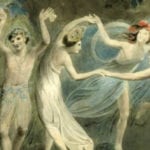 Mysteries
Mysteries  Mysteries
Mysteries  History
History 10 Surprising Stories About the Texas Rangers
 Humans
Humans 10 Philosophers Who Were Driven Mad by Their Own Theories
 Miscellaneous
Miscellaneous 10 Video-Game-Worthy Weapons and Armors from History
 Weird Stuff
Weird Stuff 10 Psychics Who Accurately Predicted Wartime Events
 The Arts
The Arts 10 Pieces of Art Inspired by a Broken Heart
 Health
Health 10 Science Fiction-Sounding New Medical Treatments
 History
History 10 Surprising Facts About the Father of Submarine Warfare
 Space
Space Ten Astonishing New Insights into Alien Worlds
 Weird Stuff
Weird Stuff 10 Bizarre Summer Solstice Rituals Still Practiced Today
 Mysteries
Mysteries Top 10 Haunting Facts About the Ghost Ship MV Alta
 History
History 10 Surprising Stories About the Texas Rangers
 Humans
Humans 10 Philosophers Who Were Driven Mad by Their Own Theories
Who's Behind Listverse?

Jamie Frater
Head Editor
Jamie founded Listverse due to an insatiable desire to share fascinating, obscure, and bizarre facts. He has been a guest speaker on numerous national radio and television stations and is a five time published author.
More About Us Miscellaneous
Miscellaneous 10 Video-Game-Worthy Weapons and Armors from History
 Weird Stuff
Weird Stuff 10 Psychics Who Accurately Predicted Wartime Events
 The Arts
The Arts 10 Pieces of Art Inspired by a Broken Heart
 Health
Health 10 Science Fiction-Sounding New Medical Treatments
 History
History 10 Surprising Facts About the Father of Submarine Warfare
 Space
Space Ten Astonishing New Insights into Alien Worlds
 Weird Stuff
Weird Stuff 10 Bizarre Summer Solstice Rituals Still Practiced Today
Top 10 Misconceptions About Famous Crimes And Trials
If there’s one thing that movies and TV shows love, it’s a good true crime story. If there’s another thing that movies and TV shows love, it’s getting the facts wrong about those true crime stories. Hollywood has skewed how we view famous events to the point where the myth is more well-known than the truth, which should be a crime itself.
10 Charles Manson Was Not A Serial Killer
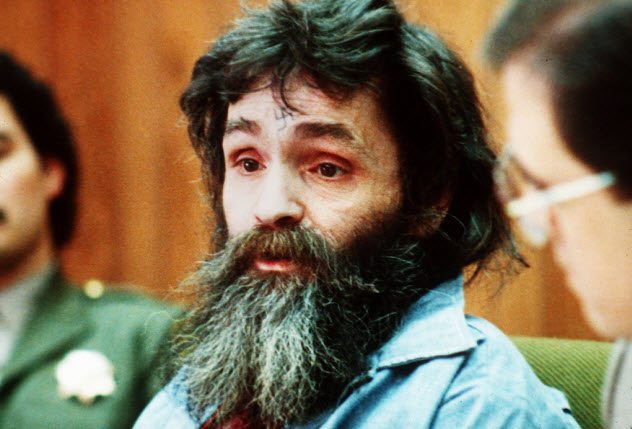
For some people, Charles Manson is the first serial killer to come to mind when they hear the phrase. That is an impressive feat of branding because Manson never actually killed anybody. He was not even present when any of the seven murders were committed by his “Family”.
“Serial killer” is an actual term used by the FBI. They define a “serial killing” as “the unlawful killing of two or more victims by the same offender(s), in separate events, with an emotional cooling-off period between the murders.”
The Manson Family never had a cooling-off period where they went back seamlessly into society. They committed their crimes in two consecutive nights of slayings in August 1969. Even when they were not killing, they did not return to society. Instead, they locked themselves up in a commune listening to Beatles records.
Fueled by Manson’s rhetoric of an impending race war and the Beatles’ song “Helter Skelter,” they were trying to bring on the apocalypse with their killings. This makes the Manson Family “mission killers” and not “serial killers.”
By ordering the murders, Manson committed seven counts of first-degree murder by proxy.[1] This was the formal charge brought against Manson in the trial. According to the courts, he is technically a proxy murderer and not a serial killer.
9 D.B. Cooper Was Not D.B. Cooper
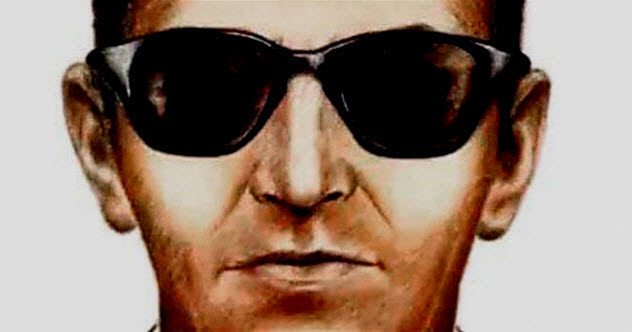
There is so much about the 1971 hijacking by D.B. Cooper that we will never answer. Did he successfully land and then navigate the Pacific Northwest forest? Who was he before he orchestrated the only unsolved hijacking in American history?
The case is so mysterious that even the things we think we know, we don’t know. Most people get even this simplest fact wrong: D.B. Cooper never claimed to be D.B. Cooper. He bought the ticket to board the plane under “Dan Cooper.” By the time Cooper became a folk hero, “Dan” had somehow morphed into “D.B.”
The confusion can all be traced to James Long, a reporter for The Oregon Journal.[2] Following the news of the hijacking, there was a mad scramble for any possible leads. Long knew Duane Youngbar, the public relations officer at Northwest Orient Airlines.
Youngbar correctly knew the name “Cooper,” but there was confusion over the first name. When they were talking over the phone, the stormy weather was messing with the signal. Youngbar said that the name was “Dan.”
There was still some static, so Long asked him to spell it out. Through the muddled reception, “D-A-N” sounded like “D and B.” This misinformation was repeated until it stuck.
Though the “D.B” part was entirely fictional, there is some evidence that the “Cooper” part may be accurate. In 2011, a woman named Marla Cooper argued that her uncle, Lynn Doyle (L.D.) Cooper was the real identity of D.B. Cooper.
Marla recalls that on Thanksgiving morning in 1971, her uncle walked in sore and beaten. He was bragging about coming into something big but was secretive about what that was. His background in the military and as a logger matches the profile that the FBI created for D.B. Though DNA evidence left at the scene does not match, Lynn Doyle Cooper has never been ruled out as a suspect.
8 Lizzie Borden Was Not Guilty Of Killing Her Parents

Even though the crimes happened nearly 125 years ago, the 1893 deaths of Abby and Andrew Borden are perhaps the only double murders to become a double Dutch rhyme. Most of what people know about the case comes from a cute little children’s poem about the gruesome hackings:
Lizzie Borden took an axe
And gave her mother 40 whacks.
And when she saw what she had done
She gave her father 41.[3]
All the poem gets right was the order of the murders. Lizzie’s stepmother was struck more than an hour before her father was murdered. Everything else about the poem is wrong.
A small criticism is that the murderer used a hatchet and not an “axe.” Obviously, this change was made because a lot more words rhyme with “axe” than “hatchet.” The poem also misreports the number of strikes on each of them. Her father was hit 11 times and her stepmother 18 or 19 times.
These are pedantic complaints compared to the fact that the poem falsely accuses Lizzie of committing the crime. After only an hour of deliberation, Lizzie was acquitted. That is no guarantee of her innocence, but it does mean that she should not be considered guilty.
There is some evidence that she really was innocent. While Lizzie was in detention, there was another axe murder in the vicinity. Moreover, Lizzie was discovered without any blood on her clothes only a few minutes after the second murder happened.
7 John Wayne Gacy Was Not A ‘Killer Clown’
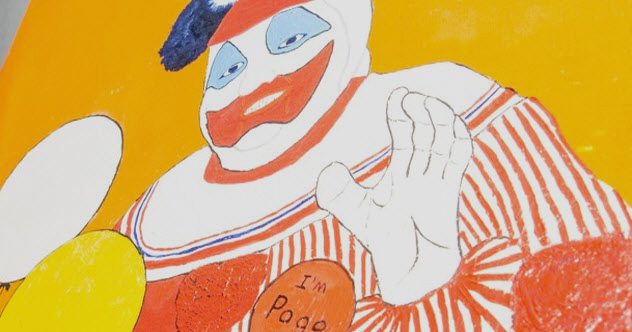
In some ways, one has to feel sorry for clowns. They were once a staple of children’s parties and circuses, but now they only show up in nightmares. A lot of this can be traced to John Wayne Gacy and the false assumption that he used to kill people while dressed up as his alter ego, “Pogo the Clown.”
However, he never murdered as a clown.[4] He did murder children that he first encountered as a clown, but the murders and his clowning were entirely separate activities.
He was a killer clown the same way that he was a “killer gardener” or “killer chef” or “killer First Amendment activist who met Rosalynn Carter.” These activities were just something that he did on the weekends.
Unlike his other hobbies, being a clown was actually beneficial for society. John Wayne Gacy dressed as “Pogo the Clown” only for children’s hospitals and church gatherings. He brought joy to young children as a clown. Obviously, he canceled out that goodwill by murdering and raping over 30 young boys.
The association between John Wayne Gacy and clowns happened after the killings ended. The day before he was arrested, he had lunch with a police officer and told him that “clowns can get away with murder.”
While in prison, he spent most of his time on death row painting pictures of clowns. Today, those drawings can sell for more than $20,000. Afterward, people noticed that his clowns had pointy smiles in the paintings. Most clowns specifically put on rounded smiles to avoid scaring children. These paintings became just as terrifying as everything else he did.
6 Jesse James Was Not The Robin Hood Of The West
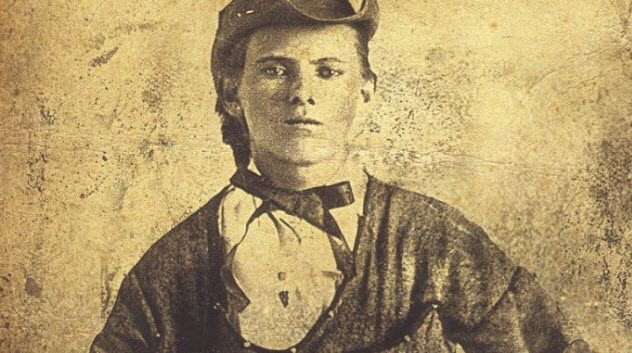
Despite what countless musicians like Bruce Springsteen, Pete Seeger, and Warren Zevon sing, Jesse James was no hero of the working class. He did not ride against the governors and the banks or give to the poor.
Like most thieves, he was a self-centered person who spent money on women, booze, and horses. He did not have some higher code. This is evident from the fact that he would hold up poor people just as much as anyone else. Instead of stealing from the rich and giving to the poor, he stole from the poor and gave to no one.[5]
This myth was created by Jesse James himself. While on his crime spree, he sent out press releases and wrote letters that painted him as a hero. One editor, John Newman Edwards, used these letters as a rallying symbol. Edwards portrayed James as a zealous ex–rebel soldier who was fighting against Missouri’s Reconstruction laws. By going after the government-owned banks, James was carrying on the Confederacy’s noble cause.
It is ironic that Jesse James was chosen as a stand-in for the Confederate cause because he was officially disavowed by the Confederacy. In what is now called the Centralia Massacre, James and his gang slaughtered and scalped two dozen unarmed Union soldiers headed home on leave.
For his barbarism, the Confederacy considered James a war criminal. No longer able to serve in the military, he became a bank robber. He wasn’t a crusader for the poor or the Confederacy. Jesse James had no cause except making a quick buck.
5 The McDonald’s Coffee Case Was Far From Frivolous

Even though most people don’t know the name Stella Liebeck, they have a strong negative opinion of her. She is more commonly referred to as the McDonald’s Coffee Lady. She has become the go-to example of frivolous lawsuits. People think of her as a greedy opportunist who did not know that coffee was hot when she spilled some on her pants for a million dollars.
The real Stella Liebeck was an average person who took on a corporate behemoth and won. For years, McDonald’s knew they had a problem with the way they made their coffee. If they heated their coffee much hotter than other restaurants—around 88 degrees Celsius (190 °F)—the aroma would flow out of the building and entice more customers to come in.
However, people across the country were being severely injured by the extremely hot coffee. More than 700 people were burned in the decade before the 1993 case.[6]
One of those people was 79-year-old Stella Liebeck. While sitting in her parked car, she spilled some coffee on her lap. She had to get skin grafts for third-degree burns on her groin, thighs, and buttocks. The injuries were so severe that she almost died in the hospital.
Stella asked McDonald’s to partially pay for her $10,000 in medical bills, but they were only willing to hand out $800. The jury decided that McDonald’s had to pay her bill and also fined the company $2.7 million, or two days in coffee sales, to force them to change their policies.
The fine was reduced by the judge to only $640,000, but McDonald’s agreed to lower the temperature of their coffee to prevent further harm.
4 Eliot Ness Did Not Bring Down Al Capone
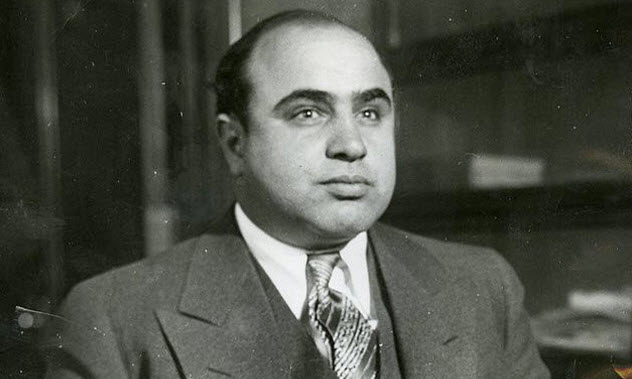
The past 50 years of movies and television have portrayed Eliot Ness as the man who, along with his band of incorruptible crime fighters, brought down Al Capone, the greatest gangster of all time. By destroying his illegal booze operations, Ness shipped Capone to Alcatraz.
As anyone who has ever seen JFK knows, Kevin Costner movies are not exactly historical documents. While it’s true that Ness hurt Capone’s profits by breaking up his breweries, this was only a small part of Capone’s empire. He made more money from gambling and prostitution than he did from bootlegging.
If one person must be credited with ending Capone’s reign, it should be US Judge James Wilkerson. Prosecutors were worried that their tax evasion case was too weak. To guarantee that Capone spent some time in jail, the lawyers offered him a plea bargain of only two and half years.
Judge Wilkerson would not allow such a minimal sentence, so he rejected any deal.[7] To stop Capone’s goons from bribing the jury, Wilkerson also gathered a second pool of jurors. When Capone was found guilty of five counts of tax evasion, Wilkerson gave him an unprecedented 11-year sentence.
No one had ever served more than three years for tax evasion. Capone would spend the rest of his life in jail, released only when the neurological symptoms of syphilis became apparent. It is not surprising that when it came time to make a TV show, the executives chose to focus on the federal agent instead of the judge.
3 The Scopes Trial Was A Get-Rich-Quick Scheme
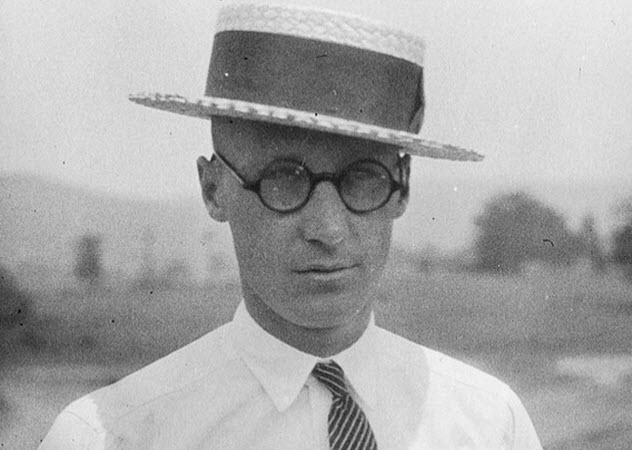
The Scopes Monkey Trial is one of the most famous battles between science and religion in American history. In movies like Inherit the Wind, the trial is presented as one brave man fighting for truth against ignorance. John Scopes is a lone crusader standing up for the right to believe and teach what you want. However, this notorious showdown was not based on philosophy but rather financial need.
Local businessman George Rappleyea wanted to bring attention to the small city of Dayton, Tennessee. Following the passage of the Butler Act, which banned teaching evolution in all Tennessee high schools, the ACLU said that they would pay anybody to challenge the law. In what is now known as the “drugstore conspiracy,” community leaders created the scam. They asked John Thomas Scopes to accept the ACLU offer.
Scopes was popular in the town, so he was the perfect candidate. Initially, he resisted because he did not want to be arrested. Far from being a martyr, Scopes became an actor.
He was not even a biology teacher.[8] He taught math, physics, and football. On the day he was arrested, he was substituting for the sick biology teacher. The lesson that day did not even include evolution. He just happened to use a textbook that mentioned evolution.
Scopes’s lawyers even told the students to perjure themselves by saying that he taught evolution. Instead of one man’s crusade for intellectual freedom, the trial was just a cash grab.
2 The Trial Of Dan White Never Claimed The Twinkie Defense

In 1978, San Francisco was reeling from the double murder of Mayor George Moscone and Supervisor Harvey Milk. Not only did the city lose two of its most prominent leaders, but the murderer was Dan White, another formerly reputable member of the San Francisco Board of Supervisors.
The city exploded in riots when White was able to get off by claiming, “The Twinkies made me do it.” In what is now known as the “the Twinkie defense,” White’s lawyers claimed that too many Twinkies and other junk food had made him crazy. Driven mad by the sugar rush, he killed the two politicians.
Of course, White’s defense team never made any such ridiculous claim.[9] They argued that White’s severe depression from losing his job meant that he was in no state of mind to premeditate anything.
This is far from the absurd legal argument that has been portrayed. Twinkies only entered into the picture because the lawyers contended that the snack cakes were a sign of White’s depression (not the cause).
In his younger days, White had been a formidable athlete. After he lost his job, however, he gave up exercise and took up eating junk food instead. This change of habit seemed to coincide with a change of emotional state. The Twinkies were only a minor part of the larger portrait of his depression. But perhaps not surprisingly, it was the part that stuck in our memories.
1 Kitty Genovese Did Not Die Surrounded By 38 Strangers
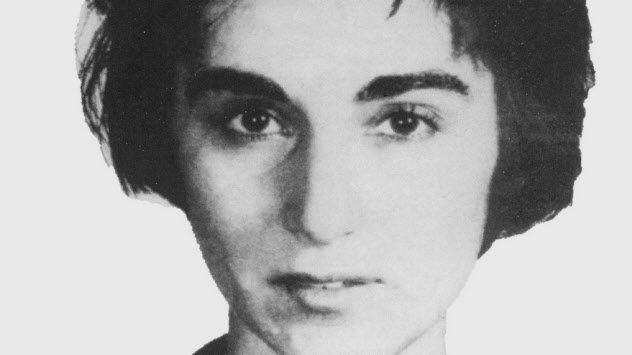
Not counting political assassinations or celebrity murders, the 1964 stabbing of Kitty Genovese is one of the rare cases where the victim is more famous than the culprit. Genovese was raised to celebrity status only through death.
Her death was even more devastating knowing that more than three dozen people watched her die and did nothing to help. Her murder was so shocking that it inspired a whole psychological phenomenon known as the “Kitty Genovese syndrome” (aka “bystander effect”).
Now the case is infamous. But at the time, it was initially ignored beyond the local press. Two weeks after the murder, The New York Times ran an article claiming: “For more than half an hour, 38 respectable, law-abiding citizens in Queens watched a killer stalk and stab a woman in three separate attacks in Kew Gardens.”
The number 38 became notoriously attached to the murder, but nobody knows where it came from. When prosecutors were investigating the case, they could only find five or six witnesses. Of those, only two actually saw Winston Moseley attack Kitty Genovese.
The other part of the myth is that nobody tried to help her. The people who did see the crime did intervene. One witness shouted, “Leave the girl alone!”[10] Upon hearing that voice, Moseley ran off.
When he returned for the second time, Kitty was standing in her apartment’s foyer. Only one other person was in the foyer when she was attacked. He was the one who was later quoted as saying that he did not want to get involved. He was too drunk to deal with the cops. However, he did alert a second neighbor and they called the police.
If you found this article to be criminally bad, you can send your comments and questions to Nate’s email at [email protected]. If you thought he did a killer job, you can follow him on Twitter. While on Listverse, check out his previous articles. They’re to die for.
Read about more misconceptions involving criminals on 10 Common Misconceptions About Serial Killers and Top 10 Heartbreaking Stories About Killers On Death Row.


